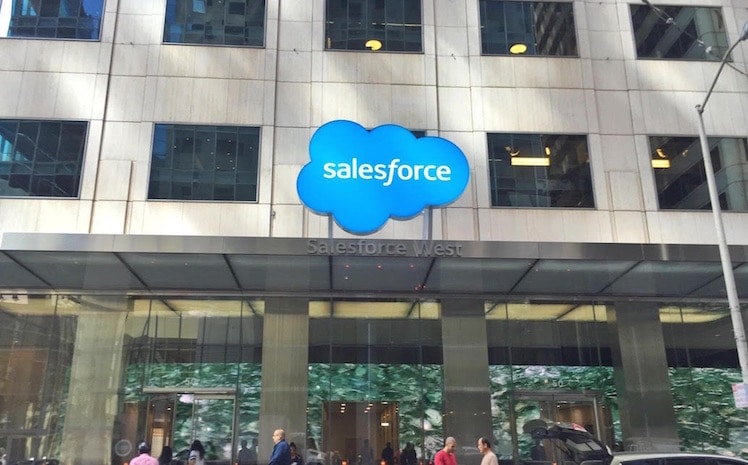Community choice aggregation (CCA) programs are getting big in California, and one of the latest to ramp up is the CleanPowerSF program run by the San Francisco Public Utilities Commission (SFPUC).
The program was boosted this week by an important new member, tech giant Salesforce. The company joined CleanPowerSF at the “SuperGreen” level, which means that the two large Salesforce East and Salesforce West buildings at their San Francisco headquarters will be powered by 100% renewable electricity.
Electricity for SuperGreen is supplied by local sources. The program provides wind and solar power from the San Francisco Bay Area, with the solar portion generated at San Francisco’s Sunset Solar Array.
As with all CCAs, CleanPowerSF customers are automatically enrolled in the basic program, which provides a larger mix of clean energy than their utility — in this case, the “Green” program at 40% renewable electricity. The power from these basic programs is usually slightly cheaper than power from the utility, despite extra costs added by utilities for CCA customers. Customers can opt out of the CCA program if they choose. In San Francisco they can also opt up to the SuperGreen level to get 100% renewable electricity, the program Salesforce has chosen.
So far, CleanPowerSF has been rolled out to over 75,000 members in San Francisco, representing about 22% of electricity customers in the city. Almost 97% of those customers have remained in the program, according to Charles Sheehan, Communications Manager at the SFPUC — a significant retention rate.
CleanPowerSF plans to finish rolling out to all electricity customers in the city by 2019, but anyone can enroll early if they choose. That’s what Salesforce has done.
“We’re extremely excited that Salesforce has joined at the SuperGreen level,” said Sheehan. “They’re our our largest SuperGreen customer to date, and the first Fortune 500 company to sign up for SuperGreen.”
Many San Francisco businesses are already part of CleanPowerSF, but both Salesforce and CleanPowerSF hope that the move by this large, influential company will set an example and spur more businesses and individuals to join. A Salesforce blog post even encouraged other Bay Area companies to join them in signing up for the SuperGreen program.
“By choosing SuperGreen, we hope to show that when cities and companies work together to reach shared climate goals the partnership has a unique ability to create positive impact that extends to the surrounding communities and ecosystems,” said Suzanne DiBianca, Salesforce executive vice president, corporate relations and chief philanthropy officer, in a press release.
CleanPowerSF provides a simple and cost-effective way for Salesforce to meet its sustainability goals. And according to Sheehan, the fact that Salesforce signed up speaks to the power of the program. It’s an important step, he said, in getting San Francisco to its goal of 50% renewable energy by 2020 and 100% by 2030. “Every time someone joins at the Green or SuperGreen level,” he noted, “they’re helping the city lower our greenhouse gas emissions, while lowering their own greenhouse gas emissions at the same time. This is how San Francisco meets its ambitious climate action goals.”
The Salesforce blog post highlighted the importance of this kind of local action, stating that “at a time when states, cities, colleges and universities, businesses and investors are working together to take action and ensure that the U.S. remains a global leader in reducing emissions, Salesforce is proud to support San Francisco’s transition to a low-carbon economy.” While the federal government wasn’t explicitly mentioned, the blog post linked to a statement in support of the Paris climate agreement. The message was clear: Salesforce has publicly committed to being a leader in fighting climate change, whatever Washington might do.
This content is protected by copyright and may not be reused. If you want to cooperate with us and would like to reuse some of our content, please contact: editors@pv-magazine.com.








By submitting this form you agree to pv magazine using your data for the purposes of publishing your comment.
Your personal data will only be disclosed or otherwise transmitted to third parties for the purposes of spam filtering or if this is necessary for technical maintenance of the website. Any other transfer to third parties will not take place unless this is justified on the basis of applicable data protection regulations or if pv magazine is legally obliged to do so.
You may revoke this consent at any time with effect for the future, in which case your personal data will be deleted immediately. Otherwise, your data will be deleted if pv magazine has processed your request or the purpose of data storage is fulfilled.
Further information on data privacy can be found in our Data Protection Policy.